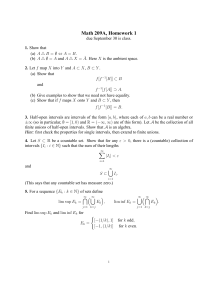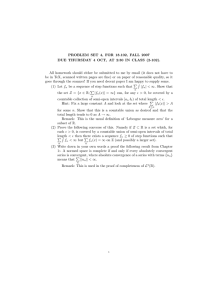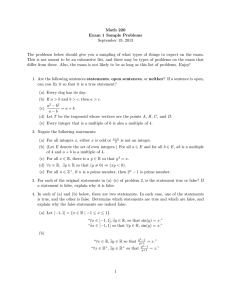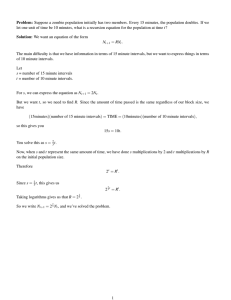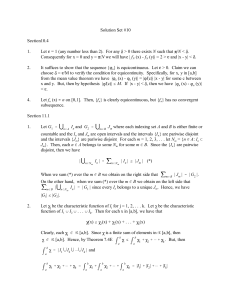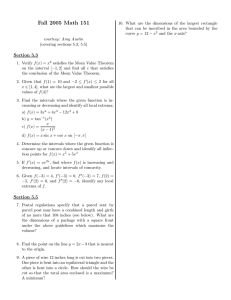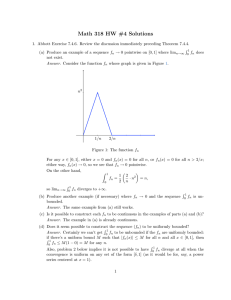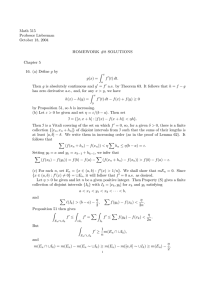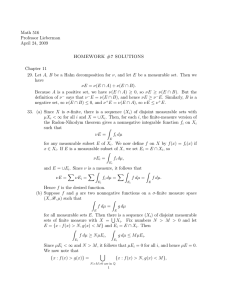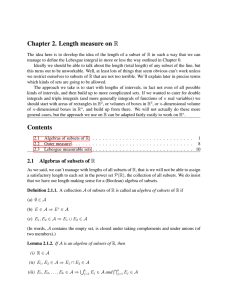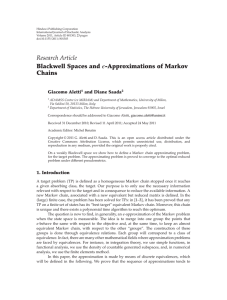Math 515 Professor Lieberman September 13, 2004 HOMEWORK #3 SOLUTIONS
advertisement
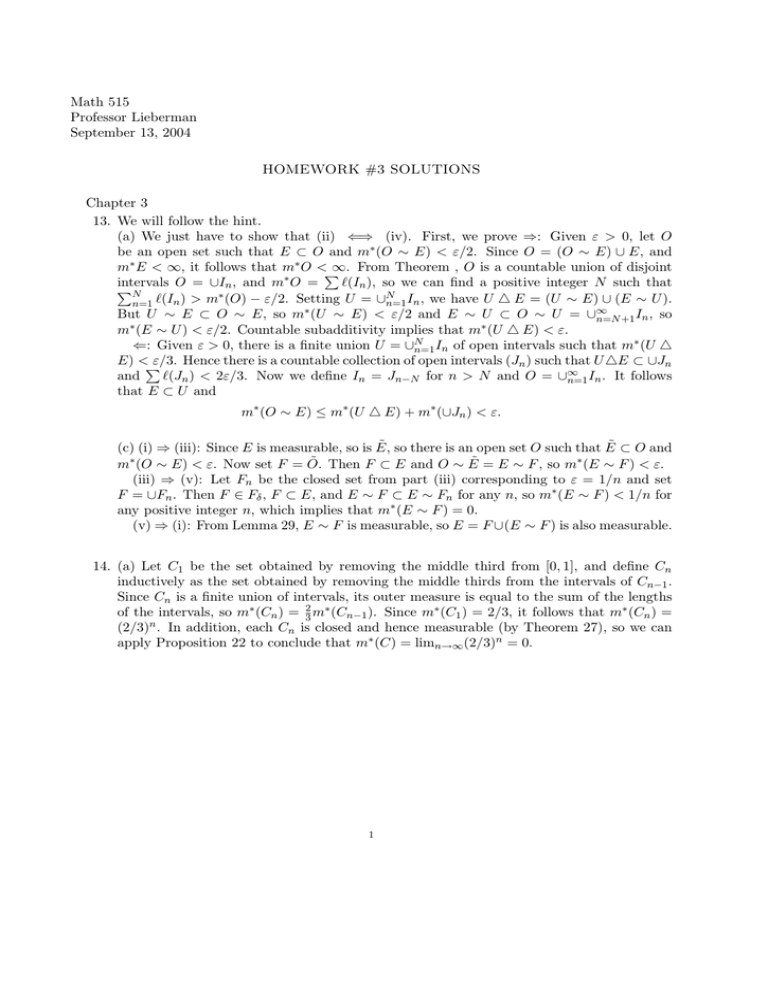
Math 515 Professor Lieberman September 13, 2004 HOMEWORK #3 SOLUTIONS Chapter 3 13. We will follow the hint. (a) We just have to show that (ii) ⇐⇒ (iv). First, we prove ⇒: Given ε > 0, let O be an open set such that E ⊂ O and m∗ (O ∼ E) < ε/2. Since O = (O ∼ E) ∪ E, and m∗ E < ∞, it follows that m∗ O <P ∞. From Theorem , O is a countable union of disjoint intervals O = ∪In , and m∗ O = `(In ), so we can find a positive integer N such that PN ∗ N n=1 `(In ) > m (O) − ε/2. Setting U = ∪n=1 In , we have U 4 E = (U ∼ E) ∪ (E ∼ U ). ∗ But U ∼ E ⊂ O ∼ E, so m (U ∼ E) < ε/2 and E ∼ U ⊂ O ∼ U = ∪∞ n=N +1 In , so m∗ (E ∼ U ) < ε/2. Countable subadditivity implies that m∗ (U 4 E) < ε. ∗ ⇐: Given ε > 0, there is a finite union U = ∪N n=1 In of open intervals such that m (U 4 E) <P ε/3. Hence there is a countable collection of open intervals (Jn ) such that U 4E ⊂ ∪Jn and `(Jn ) < 2ε/3. Now we define In = Jn−N for n > N and O = ∪∞ n=1 In . It follows that E ⊂ U and m∗ (O ∼ E) ≤ m∗ (U 4 E) + m∗ (∪Jn ) < ε. (c) (i) ⇒ (iii): Since E is measurable, so is Ẽ, so there is an open set O such that Ẽ ⊂ O and m∗ (O ∼ E) < ε. Now set F = Õ. Then F ⊂ E and O ∼ Ẽ = E ∼ F , so m∗ (E ∼ F ) < ε. (iii) ⇒ (v): Let Fn be the closed set from part (iii) corresponding to ε = 1/n and set F = ∪Fn . Then F ∈ Fδ , F ⊂ E, and E ∼ F ⊂ E ∼ Fn for any n, so m∗ (E ∼ F ) < 1/n for any positive integer n, which implies that m∗ (E ∼ F ) = 0. (v) ⇒ (i): From Lemma 29, E ∼ F is measurable, so E = F ∪(E ∼ F ) is also measurable. 14. (a) Let C1 be the set obtained by removing the middle third from [0, 1], and define Cn inductively as the set obtained by removing the middle thirds from the intervals of Cn−1 . Since Cn is a finite union of intervals, its outer measure is equal to the sum of the lengths of the intervals, so m∗ (Cn ) = 32 m∗ (Cn−1 ). Since m∗ (C1 ) = 2/3, it follows that m∗ (Cn ) = (2/3)n . In addition, each Cn is closed and hence measurable (by Theorem 27), so we can apply Proposition 22 to conclude that m∗ (C) = limn→∞ (2/3)n = 0. 1
